Dear Capitolisters,
Last Friday, President Biden began his nationwide victory lap for the $1.9 trillion American Rescue Plan (ARP). As stimulus checks land in Americans’ bank accounts this week, Biden and his Democratic Party surrogates have fanned out across the nation—including (coincidentally, I’m sure!) several swing states—to take credit for the national economic recovery that’s already well under way. No sour grapes there, I promise: Ever since Republicans lost Georgia (thrice), Biden was due some sort of big, pandemic-related legislative win (victors and spoils and all that). In fact, the most striking thing about the last few weeks hasn’t been Biden’s ARP victory or his gloating but the fact that, while the votes were being cast and even now, Republican Party opposition has barely registered—especially among the grassroots.
Instead, the biggest priority in right-leaning political circles in the days surrounding the bill’s passage wasn’t the numerous areas for Republican or conservative disagreement about the ARP’s many, many non-pandemic measures or its potential economic implications, but the decision by Dr. Seuss Enterprises to cease publication and licensing of six books that, in their view, contained “hurtful and wrong” imagery. This event, combined with a few other recent examples of “liberal cancel culture,” have dominated the airwaves and social media for the last month, essentially drowning out any Republican criticism of the ARP, regardless of its merit.
Surely, conservative culture warring makes some political sense: Even Republican policy stalwarts like President Reagan harnessed populist culture wars now and then, and—as conservative-whisperer Erick Erickson noted last week on Twitter—the culture wars probably trump (pun intended!) the policy wars at the ballot box today.
That said, I think Erickson misses a couple very big points here. First, while I certainly don’t expect politicians of any stripe to be Madisonian statesmen 24-7, they do have an obligation to—at least occasionally!—focus on boring things like policy, lest they become nothing more than media personalities doing transactional fanservice instead of actual legislators. Second, and relatedly, that boring stuff often affects—perhaps unbeknown to the TV audience—the very culture wars that these guys say they’re fighting.
Indeed, while Republicans were playing culture war cosplay over the last month, Democrats used the ARP to notch real social policy wins and are already gunning for more. So we’ll take a look at some of the biggest ones today and at what may be coming next, all the while wondering whether the new, Trumpier conservative grassroots will even notice.
The ARP’s Social Policy
The ARP contains numerous, non-COVID provisions that are—by Democrats’ own admission—intended to cement progressive economic and cultural priorities into core areas of U.S. social policy. This includes family policy and health care:
Family policy. The ARP dramatically affects family policy in two key ways:
-
First, it expands the child tax credit—in terms of size ($2,000 to $3,000 or $3,600 per child), eligibility (essentially making it a simple cash grant to all eligible parents, regardless of their tax liability), and timing (moving to monthly payments by the IRS)—through the end of the year. Views among conservatives on CTC expansion are mixed, but experts from both AEI and the Heritage Foundation have cautioned that this particular version could discourage work, decrease long-term economic mobility for lower-income Americans, subsidize high-earner families, and increase marriage penalties for low-income households (thus encouraging single parenthood)—all of which conservative family and welfare policy has opposed for decades. Democrats, on the other hand, are now looking to make these payments permanent.
-
Second, the ARP provides $40 billion to daycare centers around the country and another $8 billion to expand tax breaks subsidizing parents’ use of these “dependent care” facilities. This comes on top of $10 billion in aid for the same industry as part of the December 2020—making the combined total “the largest one-time U.S. investment in child care” ever. As with other parts of the ARP, much of the funding is indeed meant to help hard-hit childcare facilities recover from the pandemic, but a substantial portion (about $15 billion) subsidizes these same facilities for the next two fiscal years. As the Wall Street Journalnotes, conservatives have typically opposed these childcare subsidies, in part because they are tilted against a “traditional breadwinner” family model. Congressional Democrats, by contrast, are again looking for more: according to Sen. Tina Smith (D-Minnesota), “The hodgepodge of child-care systems and the instability of the systems because the economics just don’t work is a long-term problem.” Cue the long-term government solution.
Health policy. The ARP also will enact “Obamacare 2.0” by spending about $40 billion to expand Affordable Care Act subsidies and Medicaid. On the former, the bill increases through 2022 both the amount of ACA premium subsidies and the number of people potentially covered: Plans will now be free for enrollees with incomes up to 150 percent of the federal poverty level and anyone who qualifies for unemployment benefits; subsidies will be increased for individuals between 150 and 400 percent of the poverty line; and ACA subsidies will be available for the first time to Americans with incomes above 400 percent (about $51,000 for a single person and $105,000 for a family of four).
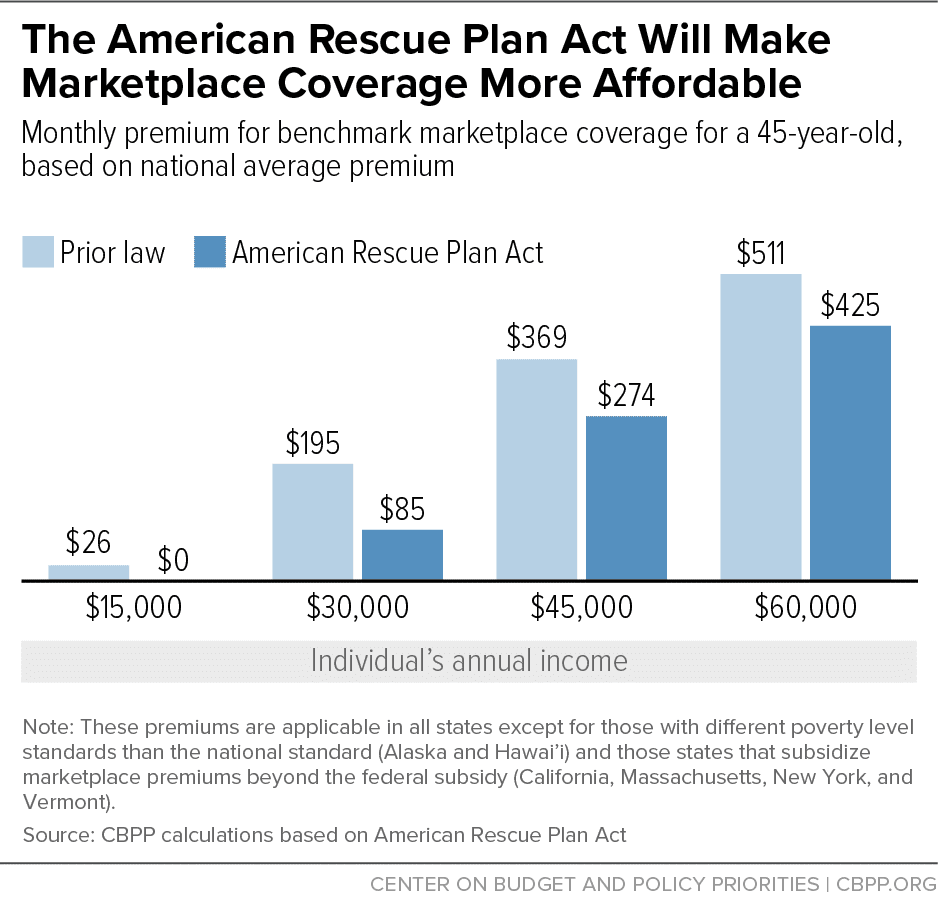
At the same time, the ARP offers the 14 states that have thus far refused to expand Medicaid coverage under the ACA a two-year “bonus subsidy” for doing so now—literally paying them more than it would cost to expand the program (at least for the first two years). Previously, the federal government paid states (1) 50 to 78 percent of the cost of “traditional” Medicaid coverage—the Federal Medical Assistance Percentage (FMAP)—for eligible residents; (2) a 90 percent FMAP for residents newly eligible under the ACA’s expansion (the “expansion group”); and (3) an additional 6.2 percentage points for these FMAPs under the CARES Act, as long as the pandemic emergency lasts. The ARP now provides an additional 5 percentage point FMAP supplement for the “traditional” Medicaid group for two years after a state agrees to expand Medicaid as per the ACA—an amount that would, per the left-leaning Center for American Progress, “represent a massive flow of federal funds to states” because state spending on the “traditional” Medicaid enrollees typically accounts for about 80 percent of overall program spending (with expansion group enrollees taking up the rest):
Because expansion costs constitute around only 2 percent of a state’s total Medicaid spending on average, the 5 percentage point increase in the traditional Medicaid FMAP offers remaining states the opportunity to expand Medicaid, cover their entire expansion costs, and receive a net increase in federal Medicaid funding. The Kaiser Family Foundation estimates that if every expansion-eligible enrollee signed up for Medicaid in these states, these states would still net $9.6 billion in new federal funds under this proposal.
The left-leaning Center on Budget and Policy Priorities agrees, noting that “the increased federal funds stemming from the overall increase in the FMAP for the rest of the Medicaid program would exceed the full cost of the Medicaid expansion,” and provides the state-by-state figures:
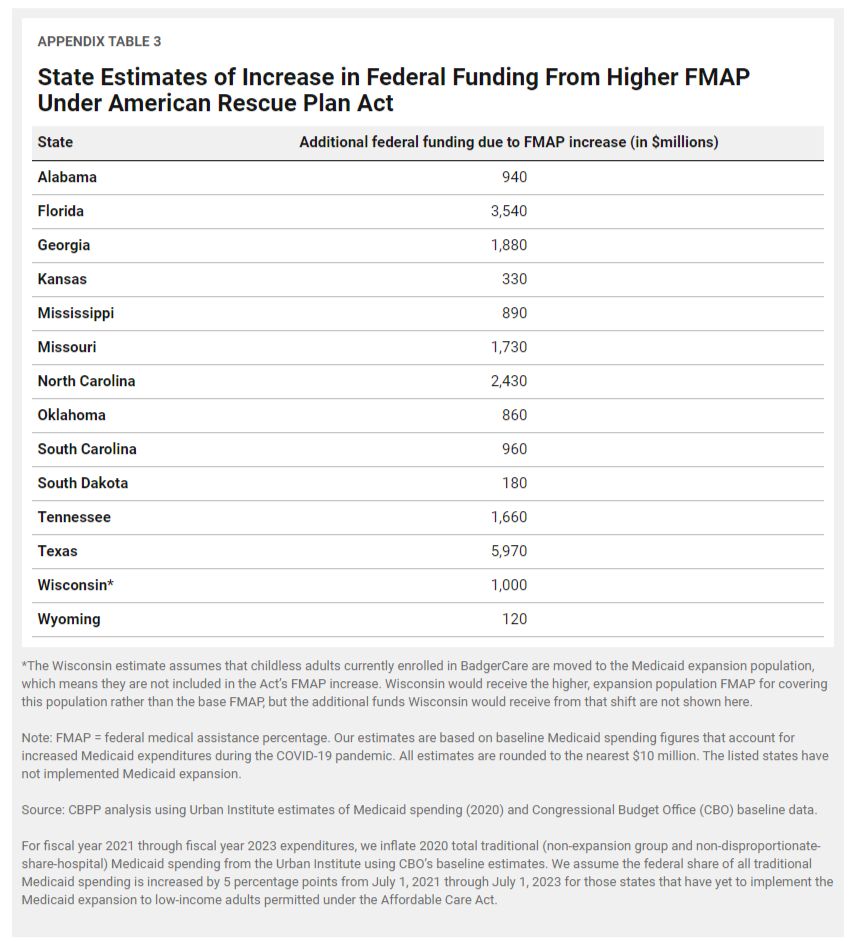
Conservative wonks are unsurprisingly displeased with these moves. The Heritage Foundation’s Doug Badger, for example, cites the Congressional Budget Office’s analysis of the ACA expansions and other sources to argue that the subsidies won’t increase health insurance coverage, will increase the deficit, and might discourage work (for both unemployed and employed workers). Many Democrats, again, are doubling down, seeing these moves as the “path of least resistance” in their push to further expand the U.S. government’s involvement in health care.
One can dispute the conservative opposition in these cases, but it’s much more difficult, I think, to ignore the fact that these ARP provisions and others simply throw more money at the social problems identified without touching why those problems exist in the first place. For example, various studies show that rising daycare costs are driven in part by onerous state regulations on staff‐to-child ratios and worker‐qualifications (e.g. licensing)—rules that don’t exist in many European countries (and many church daycares here) with no loss of quality or safety. These supply restrictions, as the Journal notes, not only drive up costs but also push lower-income Americans into informal, unregulated childcare arrangements. And now with even more dollars chasing the same restricted daycare supply, further price hikes could be on the horizon (for an analogy, see this New York Fed study on how subsidized student loans increase college tuition prices). The ARP’s CTC expansion also comes on top of other U.S. anti-poverty programs, instead of replacing or reforming them (as certain other child welfare proposals would do). And, of course, the ACA and Medicaid expansions do nothing to address the fundamental issue of rising health care costs (some driven by Medicaid itself)—thus explaining, as the Times does, why these provisions were “generally supported” by the U.S. health care industry but raised concerns even among progressives that the subsidies simply paper over the systemic causes of the high cost of American health care. The ARP touches none of this.
So Where Were the Culture Warriors?
Regardless of whether you agree or disagree with any of these policies (or my personal criticisms), the fact remains that the ARP advances core progressive social priorities in these and other areas in ways that you’d think many grassroots conservatives would oppose. And it sets the stage for more and bigger changes—basic income, universal childcare, Medicare for All, etc.—in the future. Indeed, simply extending the ARP social policies as many Democrats intend would significantly exacerbate the United States’ already-serious debt situation:
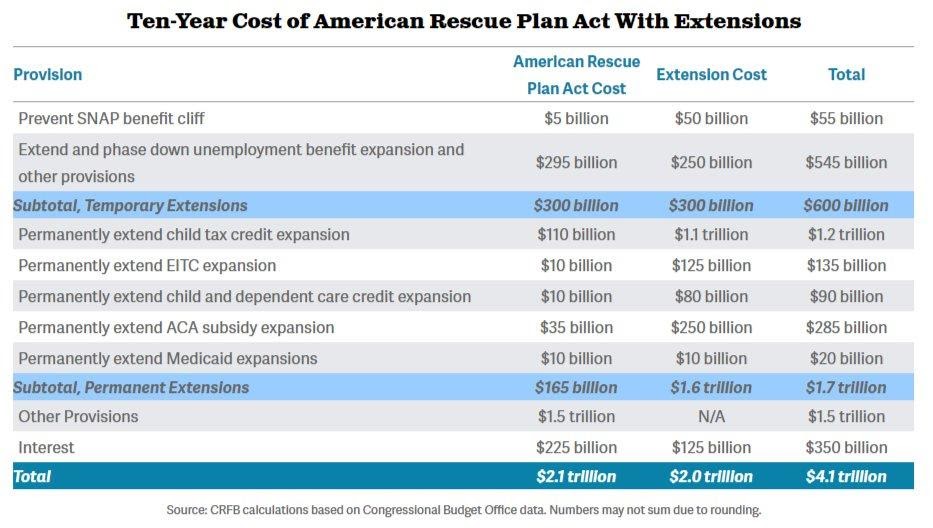
I’d call the law a “Progressive Trojan Horse,” but that would imply that these provisions were hidden. They weren’t, yet conservative media and much of the Republican Party barely seemed to notice because they had bigger (one/two/red/blue) fish to fry:
Thus, as the ARP was finishing its easy glidepath into law and Democrats were already prepping for more, Politico was asking, “Does Fox care more about Dr. Seuss or stopping Biden’s agenda?”:
Congress is about to pass and President JOE BIDEN is about to sign into law the greatest expansion of the welfare state since LBJ….
The government expansion is so broad that WaPo, reflecting the sensibility of most liberals, says it augurs “seismic shifts in U.S. politics” because the pandemic made Americans more pro-big government and more anti-austerity— perhaps permanently.…
As the bill moves through the House for a final vote this week, two big questions are on our minds: 1) How did Democrats win this fight over welfare while barely firing a shot? 2) Can they do it again?
Granted, Republicans and the right were already at a major disadvantage because they ditched any semblance of fiscal restraint during the last four years of economic expansion (i.e., precisely when it’s easiest to cut spending). But Politico also correctly noted that “the conservative media was distracted by juicier fare than tax policy” (as if there could be such a thing!):
If you’ve watched Fox News every night during the Biden presidency (we have), it’s that last point that’s the most notable. We’ve learned a couple of things: 1) The MyPillow guy has really expanded beyond pillows, and 2) Fox’s most-watched hosts care a lot more about cancel culture, Dr. Seuss and antifa’s alleged (but, according to the FBI, nonexistent) role on Jan. 6 than they do about Biden’s American Rescue Plan.
NYT’s Ezra Klein recently described this dynamic: “If you can dial down the conflict, you can dial up the policy.”
That seems wrong because it suggests that Biden can control the conflict knob. When faced with an economic crisis in 2009, BARACK OBAMA did not dial up the conflict. It’s just that he faced a united GOP that closely coordinated with a powerful media echo chamber that helped create a massive backlash to federal policies.
Partisan hyperbole aside, there’s obviously some truth here: Most voters aren’t policy-obsessed Capitolism subscribers or constantly refreshing Twitter for the latest CBO scores or Senate parliamentarian rulings. (Their loss on both counts.) They take cues from media and political leadership and, when it comes to the ARP and “ the greatest expansion of the welfare state since LBJ,” the TV pundits didn’t care and GOP opposition has been muddled at best:
Republicans are only now scrambling to define the ARP and are left to hope that it doesn’t work, while Democrats are on the attack. A big reason for that is that instead of mounting an effective messaging campaign to highlight these provisions—ones almost entirely unrelated to the pandemic—and others (such as that ridiculous union pension bailout or the $60 billion in tax hikes), and to define the ARP as a bloated, stealth, and wholly partisan vehicle to achieve progressive social change under the cover of Covid, Republicans were on TV yelling about children’s books and cancel culture. And now, as the Biden administration and congressional Democrats gear up for another $2 trillion in “infrastructure” spending (light on actual infrastructure and again heavy on progressive social priorities) and even bigger tax hikes, conservative media is again focused on the important things:
Ironically, as Sonny Bunch recently noted, the Dr. Seuss saga and the inevitable, unwinnable cultural tensions arising from old and “problematic” classics are caused in part by federal policy—in particular, U.S. copyright laws that protect these works for many decades—and could be resolved through common sense reforms. But instead of charting a path toward fixing that mess and addressing the systemic causes of other U.S. social problems, Republicans and many conservatives just go on TV to yell about them.
But the ARP’s passage shows that policy still matters, whether culture war conservatives like it or not. If they and Republicans continue to ignore that fact, they might end up winning the ratings war but losing the culture war for a generation.
And Democrats’ powder would still be dry.
Chart(s) of the Week
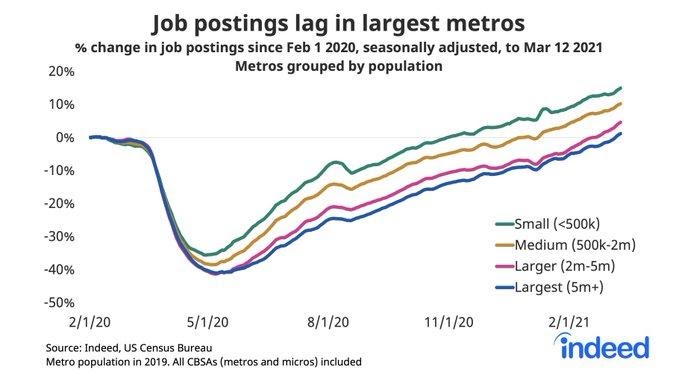
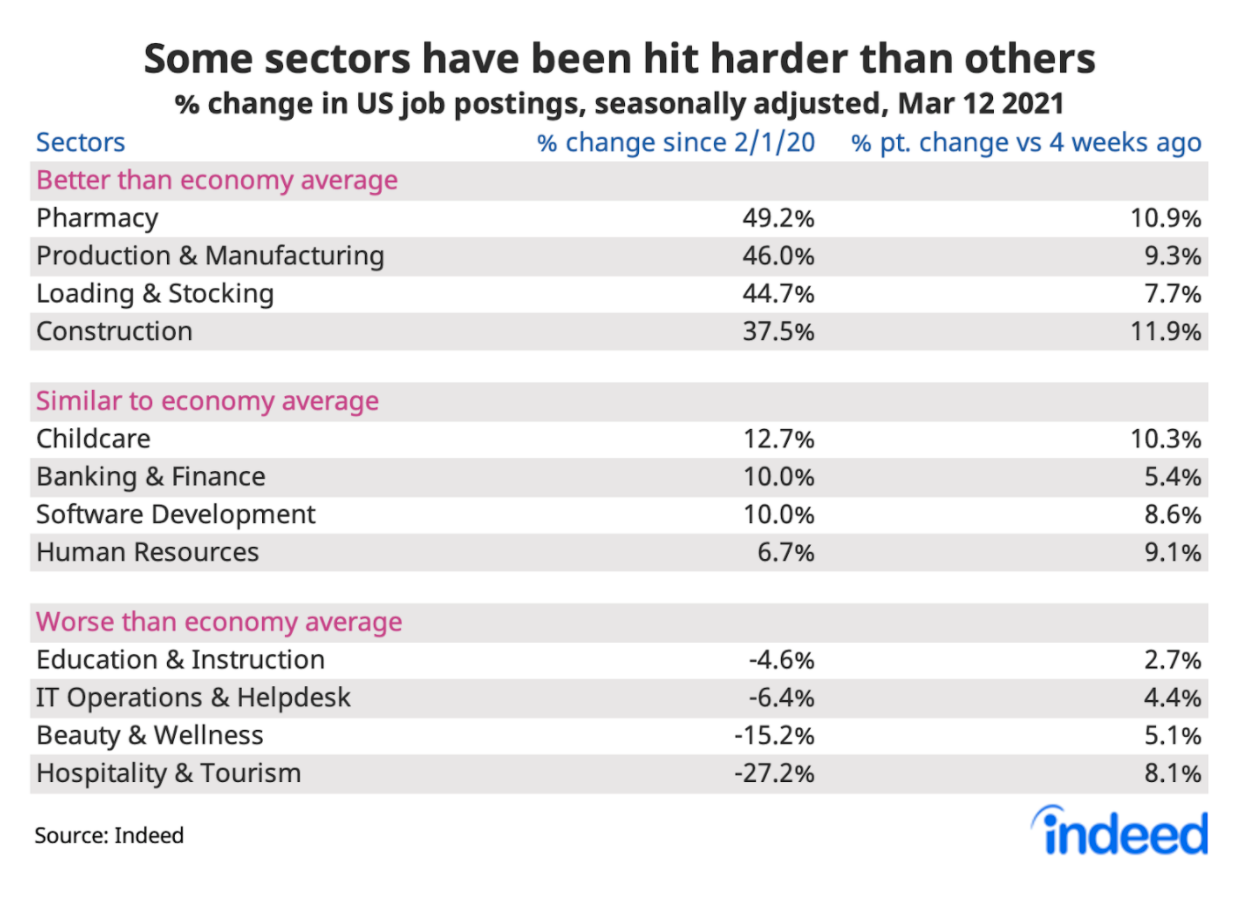
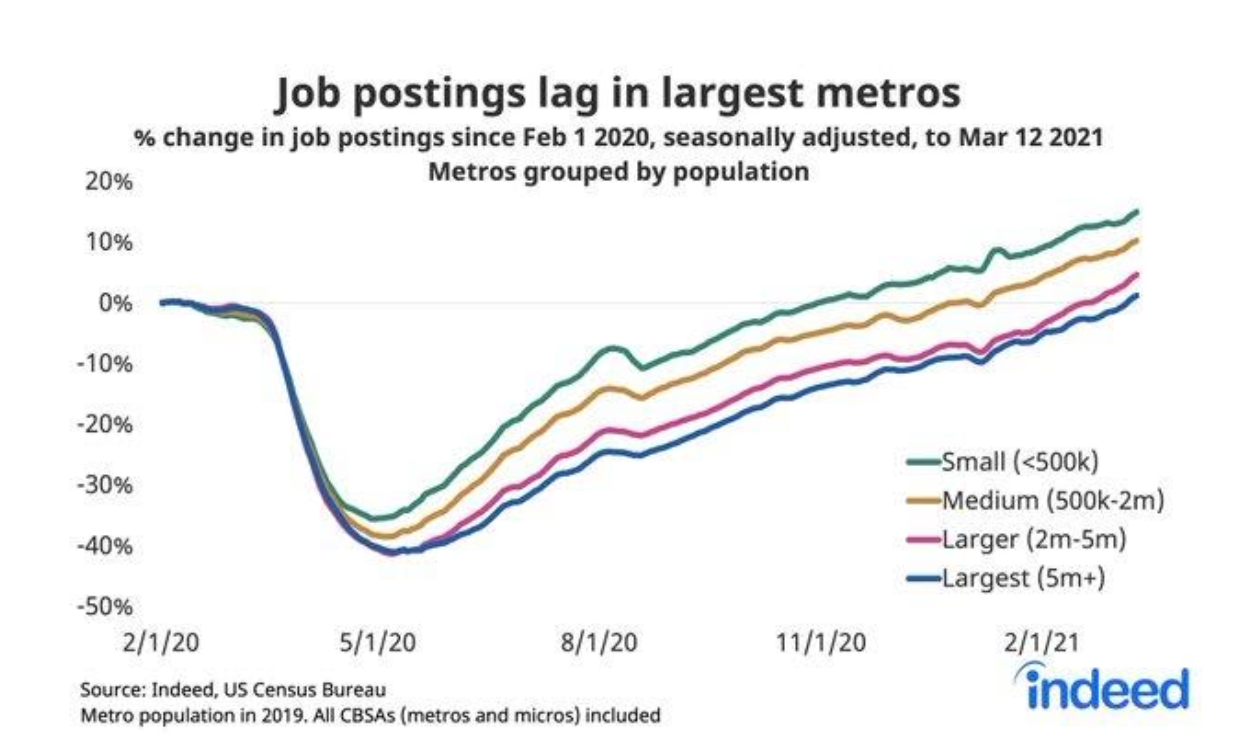
The Links
Study: “When public housing tenants are given the opportunity to buy their units, eventual buyers significantly increase their labor supply”







Please note that we at The Dispatch hold ourselves, our work, and our commenters to a higher standard than other places on the internet. We welcome comments that foster genuine debate or discussion—including comments critical of us or our work—but responses that include ad hominem attacks on fellow Dispatch members or are intended to stoke fear and anger may be moderated.
With your membership, you only have the ability to comment on The Morning Dispatch articles. Consider upgrading to join the conversation everywhere.